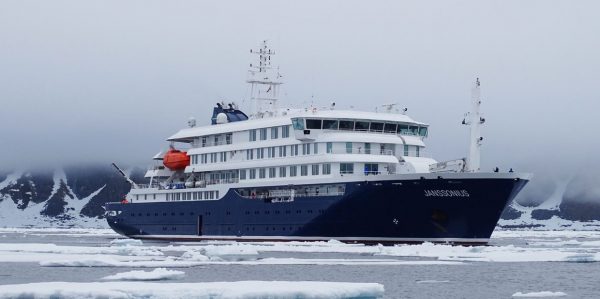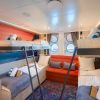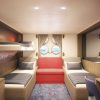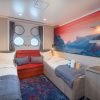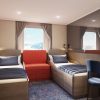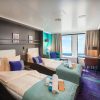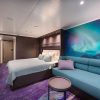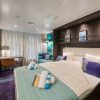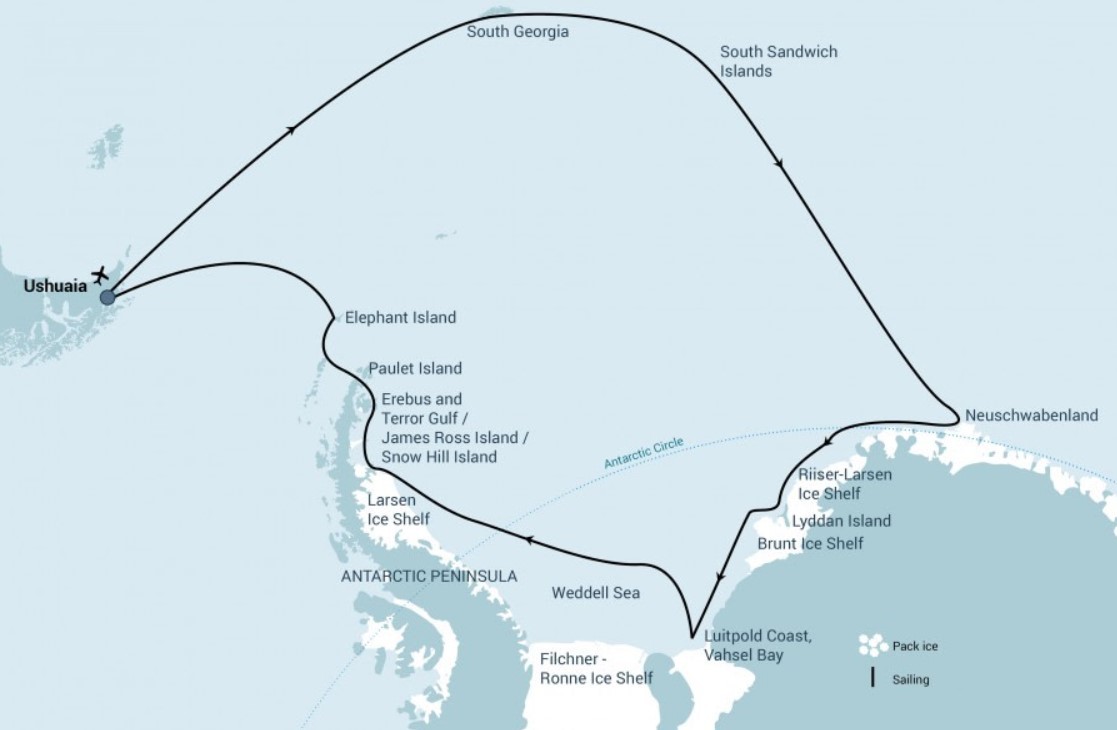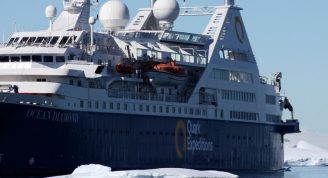Description
This adventurous expedition explores one of the least-visited areas on Earth, Antarctica’s amazing Weddell Sea. After visiting some of the same sites legendary explorer Ernest Shackleton’s charted in South Georgia, we’ll enjoy the Weddell’s exotic wildlife and colossal tabular icebergs.
Remote Weddell Sea Explorer: –
Starting in South Georgia after leaving Ushuaia, we will be on the trail of famed polar explorer Ernest Shackleton and his ship Endurance, experiencing the Weddell Sea’s amazing wildlife and tabular icebergs before returning via Elephant Island.
The continental borders of the Weddell Sea are formed by huge floating sheets of ice. These ice shelves produce the massive tabular icebergs that are so abundant in the Weddell Sea. Scientists have declared the waters of the Weddell Sea to be the clearest water of any sea on Earth.
The tabular icebergs and other ice formations offer fantastic landscapes and unique photo opportunities. Especially on the east side of the Weddell, the chance of landings can be limited due to these ice formations. Zodiac cruises and possible ice landings are wonderful alternatives, if conditions allow.
The Weddell Sea is home to a large number of orcas, humpbacks, and minke whales as well as leopard, Weddell, and crabeater seals. Several penguin species can be seen there too.
On the ship, our structured educational program will complement other activities. You will have the chance to learn all about the area’s wildlife, landscape, history, political status, and more. We actively participate in citizen science projects, and you can also participate in such projects.


